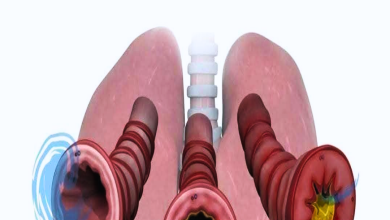One of the primary challenges in recognizing fatty liver disease is its asymptomatic nature, especially in the early stages. Being a resilient organ, the liver can function adequately even with a considerable degree of fat accumulation. This lack of overt symptoms can lead to a false sense of well-being, delaying diagnosis until the disease has progressed significantly.
What is fatty liver disease?
Fatty liver disease, also known as hepatic steatosis, occurs when there is an abnormal accumulation of fat in liver cells. This can be categorized into two main types: alcoholic fatty liver disease (AFLD) and nonalcoholic fatty liver disease (NAFLD). While AFLD is associated with excessive alcohol consumption, NAFLD is linked to factors such as obesity, insulin resistance, and metabolic syndrome.
No, alcohol is not the culprit always!
Fatty liver disease, once considered a condition associated with excessive alcohol consumption, has become a widespread health concern with a growing prevalence globally. Often symptomless in its early stages, fatty liver disease is characterized by fat accumulation in liver cells, leading to inflammation and potential long-term damage. Despite its silent nature, ignoring the signs and risk factors can have severe consequences.
Fatigue is a classic symptom of fatty liver disease
Fatigue is a common early symptom of fatty liver disease. The liver plays a vital role in energy metabolism and the storage of glucose. When the liver is affected by excessive fat accumulation, its normal functions may be compromised, leading to fatigue and low energy. Individuals with fatty liver disease often experience tiredness, even after getting an adequate amount of sleep.
Abdominal discomfort is commonly seen in patients
Some people with fatty liver disease may experience discomfort or pain in the upper right side of the abdomen, where the liver is located. This discomfort can range from a dull ache to a feeling of fullness or pressure. It may not always be severe, but persistent discomfort in the abdominal region should be evaluated by a healthcare professional.
Do not ignore unexplained weight loss
Unexplained weight loss can be an early indicator of fatty liver disease. The liver is involved in various metabolic processes, including the regulation of body weight. When the liver is affected by excess fat, it may lead to disruptions in these processes, resulting in unintended weight loss. Individuals with fatty liver disease may notice a gradual decrease in body weight without significant diet or physical activity changes.
Weakness and malaise is another common symptom
Weakness and a general feeling of malaise are often reported by individuals with fatty liver disease. The liver’s compromised function may contribute to a sense of overall weakness and discomfort. This symptom can impact daily activities and quality of life, prompting individuals to seek medical attention.
Jaundice is another symptom to look for
In some cases, fatty liver disease may progress to a more advanced stage, causing jaundice. Jaundice is characterized by the yellowing of the skin and eyes due to elevated levels of bilirubin, a yellow pigment. While jaundice is not a common early symptom, it may indicate more severe liver involvement. If jaundice is present, urgent medical evaluation is necessary to determine the underlying cause and initiate appropriate treatment.
Dry, itchy skin is one of the common symptoms of liver disease.
When the liver fails to detoxify the body and is unable to regulate hormones to operate properly, it can lead to skin dryness and irritation.
To reduce this symptom, stay hydrated. Moreover, incorporating a fatty liver diet plan that supports liver function, as well as natural remedies for fatty liver, can help improve skin condition.
Continuous skin rashes and bruising can be caused by liver disease.
The liver generates blood-clotting components, and decreased function can cause an increased tendency to bruise and develop rashes. This condition happens because the liver is not functioning properly, it may not produce adequate clotting factors, leading to easy bruising and skin rashes.
An increased abdominal girth is an indication of fatty liver
Fatty liver disease can lead to abdominal swelling and an increase in abdominal girth. This is often due to the accumulation of fluid in the abdominal cavity, a condition known as ascites. Ascites is a more advanced complication of liver disease, and its presence may suggest the progression of fatty liver to a more severe stage. It is essential to seek medical attention if abdominal swelling is observed.
How to prevent fatty liver?
Obesity is a significant risk factor for fatty liver disease. Adopting a healthy, balanced diet and incorporating regular physical activity can help manage weight and reduce the risk of fat accumulation in the liver.
Managing blood sugar levels is crucial in preventing and managing fatty liver disease. A diet rich in whole foods, low in added sugars, and regular exercise can contribute to better blood sugar control.
Prioritize a diet that supports heart health, including ample fruits, vegetables, whole grains, and lean proteins. Limiting saturated and trans fats, as well as refined carbohydrates, can positively impact both liver and cardiovascular health.
Engaging in regular physical activity is a key component of preventing and managing fatty liver disease. Exercise helps improve insulin sensitivity, promote weight loss, and reduce inflammation.
While nonalcoholic fatty liver disease is prevalent, excessive alcohol consumption can contribute to liver damage. Moderation or abstinence from alcohol is advisable, especially for those at risk.
Keeping cholesterol levels within a healthy range is essential for overall cardiovascular and liver health. A diet low in saturated fats and regular exercise contribute to maintaining optimal cholesterol levels.
Source: timesofindia.indiatimes.com
Note: Content is provided for informational purposes only and is not intended as a substitute of medical advice. Seek guidance of your doctor regarding your health and medical conditions.







